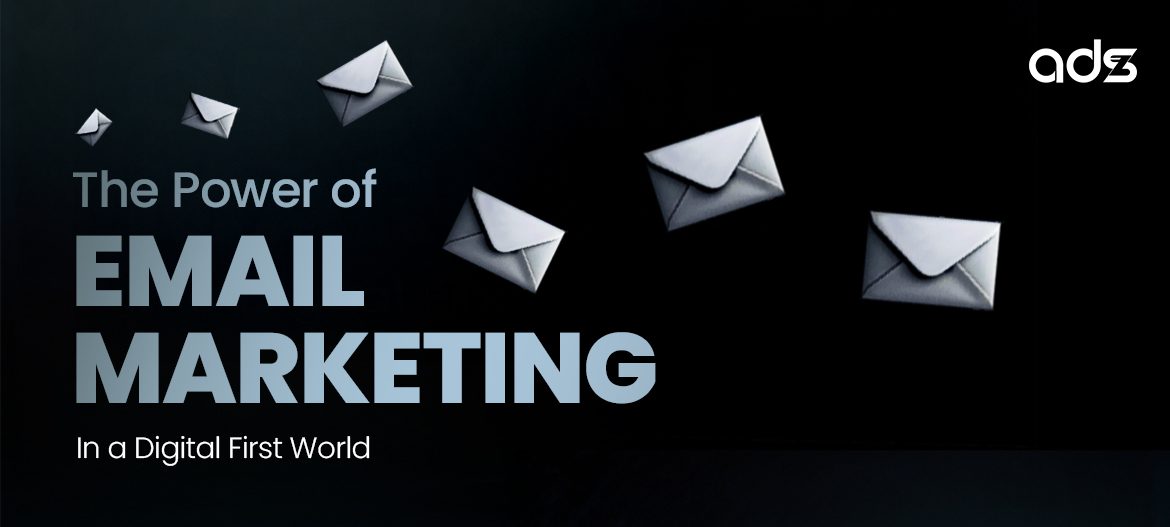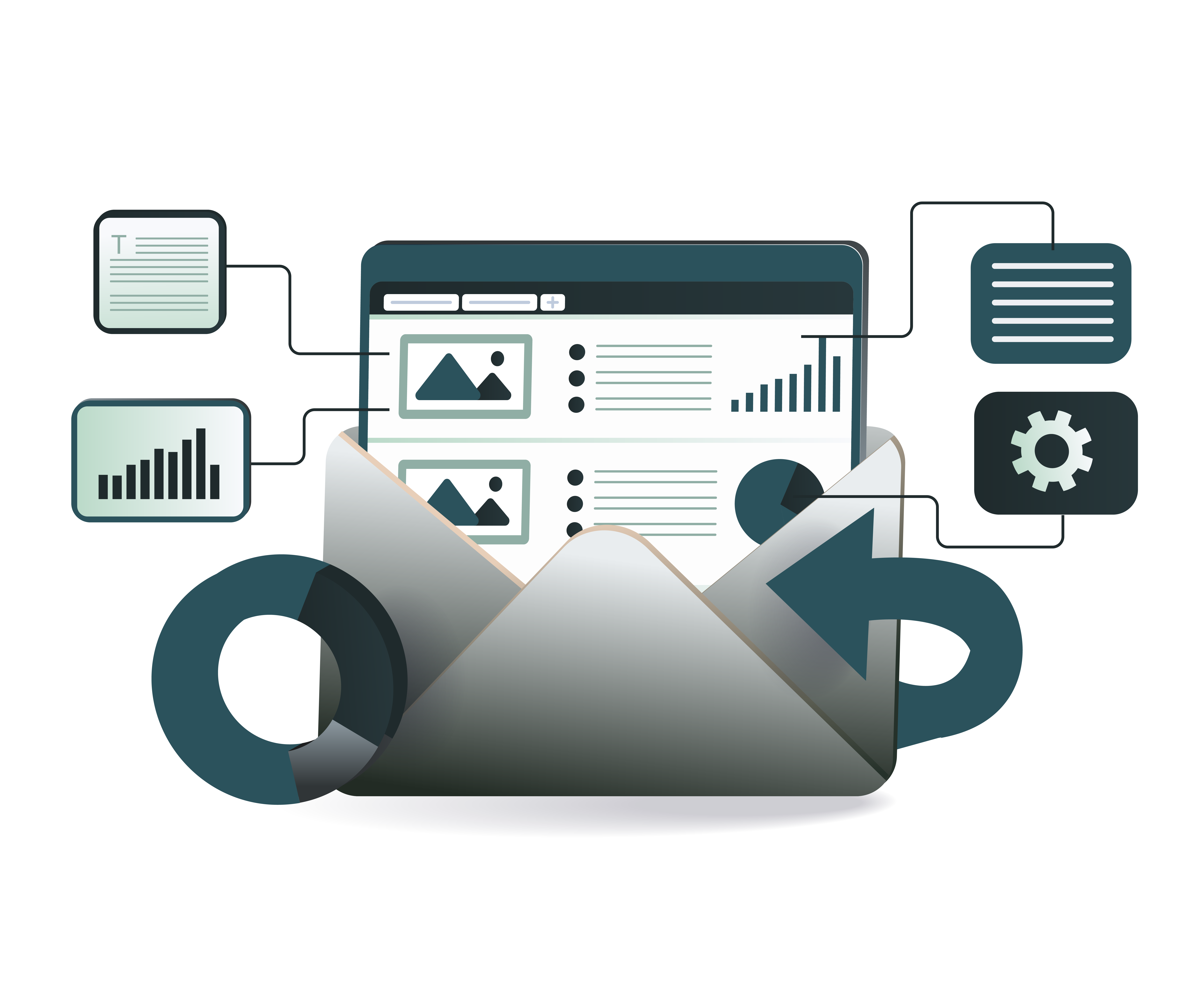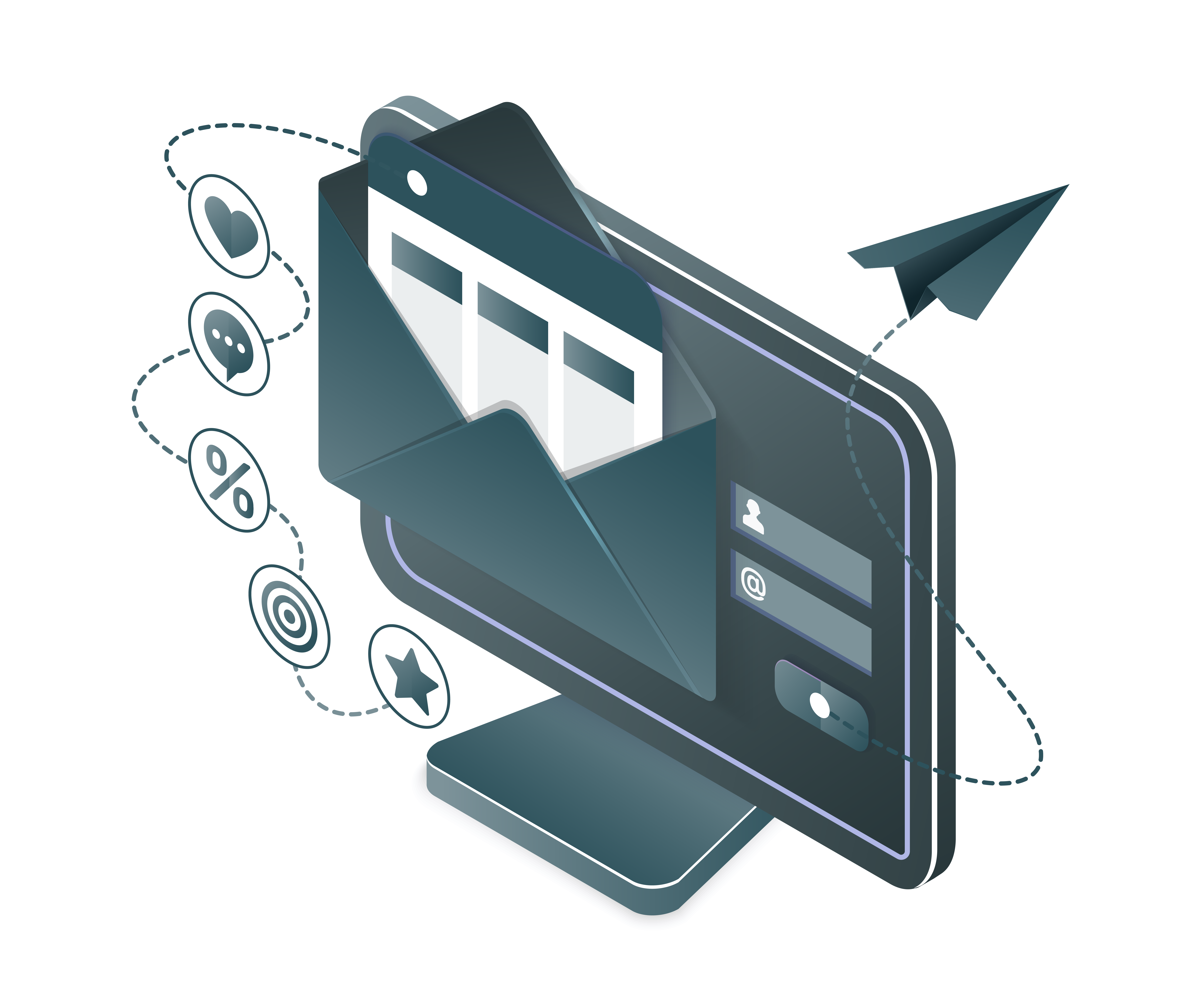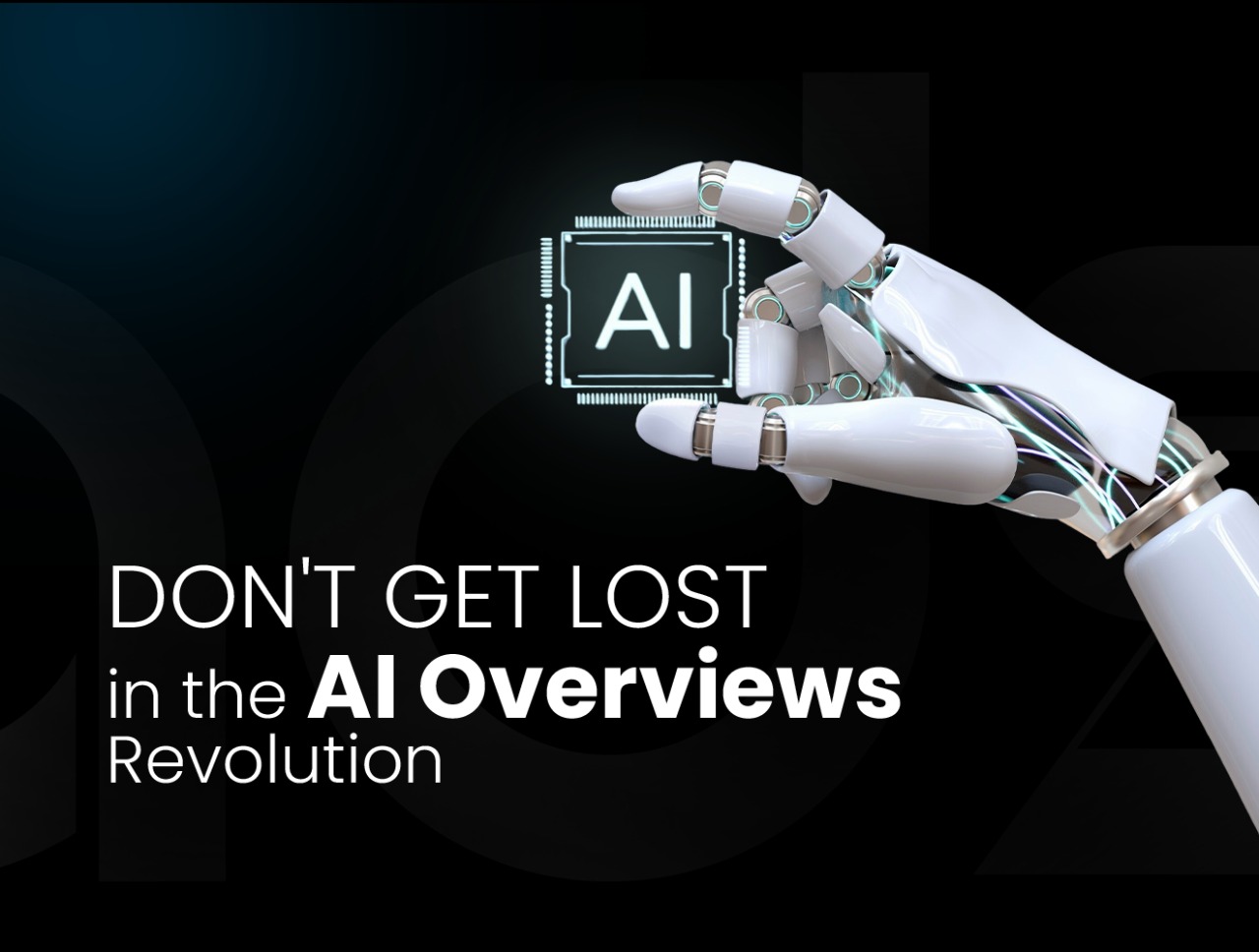
The Power of Email Marketing in a Digital-First World
Still Think Email is Outdated? Check Your Inbox.
In a world driven by social feeds and fleeting ads, email quietly remains the most cost-effective, high-conversion, and relationship-driven digital channel.
You check your inbox every day.
So do your customers.
So do your future leads.
We’ve worked with brands like Automed and VM Sciences, where personalized email flows became the backbone of their lead nurturing, product education, and conversion strategy.
Let’s explore why email marketing is still and will continue to be a powerhouse in a digital-first landscape.
Why Email Marketing Is More Relevant Than Ever
Ownership: You control your list. No algorithm changes can stop delivery.
Personalization: Segment by interest, funnel stage, and past behavior.
Cost Efficiency: Highest ROI of any digital marketing channel up to $40 for every $1 spent.
Direct Line to Decision-Makers: Especially critical for B2B deals and long buying cycles.
How Email Powers B2B Growth
1. Lead Nurturing with Automation
Turn cold leads into hot prospects through:
Welcome sequences
Educational drips
Re-engagement flows
For a Pharma Equipment Manufacturing leader, a 5-email funnel led to a 33% lift in product page visits.

2. Personalized Content = Higher Engagement
Use dynamic fields and segmented lists to send:
Product recommendations
Location-specific deals
Personalized offers
💡 A campaign from a Pharma Equipment Manufacturing leader saw a 40% higher CTR when switching from generic blasts to segmented drip emails.
Product recommendations
Location-specific deals
Personalized offers
3. Time-Triggered Campaigns
Send the right message:
After a demo
Post-download
Pre-renewal or subscription end
Post-purchase for upsells or referrals
After a demo
Post-download
Pre-renewal or subscription end
Post-purchase for upsells or referrals
4. Trackable & Measurable Performance
Know exactly what’s working:
Open rate
Click-through rate
Conversion rate
Revenue per email
Integrated analytics give you real data, not vanity metrics.
Open rate
Click-through rate
Conversion rate
Revenue per email
5. Privacy-Forward & First-Party Data Compliant
Unlike cookies or social tracking pixels, email is:
Opt-in
Permission-based
GDPR/CCPA friendly
Build trust and compliant marketing funnels at once.
Opt-in
Permission-based
GDPR/CCPA friendly

What Makes a High-Impact Email Strategy?
Segmented audiences
Valuable content (not just promos)
Mobile-optimized design
Consistent branding
Strong CTAs (1 goal per email)
A/B testing subject lines & buttons
CRM + marketing automation integrations
Tools & Platforms to Consider
Mailchimp (easy to start)
HubSpot (B2B CRM + automation)
Klaviyo (eCommerce + segmentation)
Benchmark Email (used with a Pharma Equipment Manufacturing leader for pharma outreach)
Zoho Campaigns (great for India-based teams)
A top email marketing agency in Bangalore can help you set up, optimize, and scale on the right platform for your goals.
Real Results: Email That Converts
Laboratory Equipment supplier: Product-led nurture flow → 23% increase in MQLs
Pharma Equipment Manufacturing leader: Post-expo follow-up emails → 18% conversion to demo bookings
B2B SaaS Client: Abandoned signup reactivation → 35% re-engagement rate

Social Gets You Visibility. Email Gets You Sales.
Think of it this way:
Your Instagram builds awareness.
Your email builds relationships — and revenue.
Your Instagram builds awareness.
Your email builds relationships — and revenue.
Conclusion: Your Most Underrated Digital Asset? The Inbox.
In a digital-first world:
SEO brings you traffic
Ads bring you awareness and conversions
But email builds trust and drives action
📌 Looking to scale? Partner with the best email marketing company or a trusted email marketing agency in Bangalore that can help you:
Segment lists
Build smart flows
Write persuasive emails
Automate everything
Because in 2025, email isn’t a tool — it’s your best-performing sales rep.

Ready to Turn Your Inbox into a Revenue Machine?
Venkatesh P
From enterprise SaaS to B2B manufacturing and select B2C verticals, Venkatesh builds integrated campaigns that turn demand into pipeline, and pipeline into predictable revenue. Passionate about marketing that aligns with sales and business outcomes, he brings both strategic clarity and executional depth to every project.
Posted on August 1, 2025
Search Here
Subscribe to Our
Newsletter
Get the latest marketing trends, tips & tools — straight to your inbox. No spam. No BS. Just results. ✌️
Let's Talk
Recent BlogsRecent Blogs
.jpg?alt=media&token=6edafa4e-9716-420e-91b8-b96ad311db25)
Ultimate Website Checklist for SEO in 2025 to Boost Rankings and Traffic
Your Website Looks Great — But Is It Optimized to Rank?
You’ve invested in design. Your content reads well. But you're still not showing up on Google.
We’ve seen this with brands across pharma, SaaS, and manufacturing. Most websites look polished, but behind the scenes?
Slow page loads
Poor indexing
Missing schema
Weak internal linking
- That’s why we created this ultimate SEO checklist for 2025 — based on what’s working right now across clients like VM Sciences, Automed, and early-stage startups.
Whether you're doing SEO in-house or working with a professional SEO company in Bangalore, this guide will help you uncover what’s missing.
.jpg?alt=media&token=cb837697-d71d-4154-8bb3-2c17745467af)
The Importance of Structured Data Markup in SEO
Why Your Website Isn’t Showing Up the Way It Should
You’ve written great content. You’ve optimized for keywords.
But your competitor’s listing on Google looks better. They have:
Star ratings
FAQ dropdowns
Product availability
Event dates and more
What’s their edge? Structured data.
This invisible but powerful piece of SEO is what helps Google understand — and showcase — your content more effectively.
Let’s explore what structured data is, how it works, and why B2B businesses can’t afford to skip it in 2025.
%20(2).jpg?alt=media&token=8d1adfa9-fec3-46e6-8f76-4e2367292ae1)
Top 10 Social Media Strategies to Enhance SEO Performance
Social Media Doesn’t Directly Impact Rankings — But It Heavily Influences SEO
You’ve probably heard that “social media doesn’t directly boost SEO.”
Technically true. But here’s what actually happens:
A great blog gets shared on LinkedIn
It gets picked up by 5 industry influencers
It drives traffic + backlinks
Bounce rate drops. Time on site increases
That page ranks — organically
We’ve used this exact playbook with clients like Automed (in healthcare) and VM Sciences (in pharma) to amplify search performance through social content.
Let’s dive into 10 proven social media strategies that directly support and elevate your SEO.
.jpg?alt=media&token=d8176526-83f7-44c0-803a-71818ace5dfd)
How to Handle Duplicate Content Across Multiple Domains for SEO Success
The Hidden SEO Killer You Didn’t Know You Had
In 2023, a pharma brand with three microsites across India approached us with a major issue: their Google rankings had tanked. Their traffic was dropping, but their content team had been churning out quality articles weekly.
After a deep SEO audit, we found the culprit — duplicate content across all domains.
This isn’t just their story. If your business operates multiple websites, landing pages, or distributes the same content across platforms, you might be hurting your SEO without realizing it.
Let’s break down what duplicate content really means, why it matters, and how businesses, especially B2B ones,can fix it in 2025.
.jpg?alt=media&token=46ae0a4b-fb50-42d6-a10d-bf369a66a9df)
The Power of Email Marketing in a Digital-First World
Still Think Email is Outdated? Check Your Inbox.
In a world driven by social feeds and fleeting ads, email quietly remains the most cost-effective, high-conversion, and relationship-driven digital channel.
You check your inbox every day.
So do your customers.
So do your future leads.
We’ve worked with brands like Automed and VM Sciences, where personalized email flows became the backbone of their lead nurturing, product education, and conversion strategy.
Let’s explore why email marketing is still and will continue to be a powerhouse in a digital-first landscape.
Why Email Marketing Is More Relevant Than Ever
Ownership: You control your list. No algorithm changes can stop delivery.
Personalization: Segment by interest, funnel stage, and past behavior.
Cost Efficiency: Highest ROI of any digital marketing channel up to $40 for every $1 spent.
Direct Line to Decision-Makers: Especially critical for B2B deals and long buying cycles.

How to Optimize Web Pages for AI Overviews (ChatGPT, SGE, Bing)
Optimizing your website for AI overviews and large language models utilizing SEO, semantic structure, and content strategy mix will ensure that the information is comprehensible, machine-readable, and reliable. You'll be ready to optimize your pages for AI if you follow these simple steps.
Key Objectives
Provide content with little ambiguity, semantic HTML, and a clear structure to make it easy for AI to understand.
Give AI brief summaries and answers that can be chosen for highlighted responses or summaries.
When LLMs create long-form content, make sure your website has enough citations and depth for credibility to make it the go-to source.
1. Content Structure for LLMs & AI Overviews
Use Clear HTML Semantics
Make use of the <h1>, <h2>, and <h3> headings in a logical order.
For paragraphs, use <p>; for lists, use <ul>/<ol>; and for tabular data, use <table>.
Add the markup for schema.org (see below).
Add TL;DR or Key Takeaways
Include a short summary or TL;DR section at the top:
html
CopyEdit
<div class="tldr">
<strong>TL;DR:</strong> This guide explains how to optimize your site for AI summaries by using structured content, schema markup, and concise language.
</div>
Use Question-Answer Format (FAQ-style)
Use FAQPage schema.
Add clear H2s or H3s like:
"What is a VFD panel?"
"How do PLCs differ from DCS systems?"
2. Schema & Structured Data
Implement JSON-LD Structured Data
Use Schema.org types like:
FAQPage
HowTo
Product
Article or BlogPosting
LocalBusiness (for location-based visibility)
Example (FAQPage):
json
CopyEdit
{
"@context": "<https://schema.org>",
"@type": "FAQPage",
"mainEntity": [
{
"@type": "Question",
"name": "What is a control system?",
"acceptedAnswer": {
"@type": "Answer",
"text": "A control system manages, commands, directs or regulates the behavior of other devices or systems."
}
}
]
}
3. Writing Style & Language
Use:
Make sure the sentences are short and declarative.
There should be a subheading after every 200-300 words
Use bolded, significant terms.
Give detailed explanations (e.g., "PLC stands for…").
For clarity, use numbered lists or bullet points.
Avoid:
Vague marketing jargon.
Highly complex sentence patterns.
Keyword stuffing or using too many synonyms
4. Topical Authority Signals
Cover the Topic Deeply
Make clusters which consist of one pillar and several associated blogs or subpages.
Frequently use anchor text that resembles query phrases in internal links.
Add Supporting Media:
Diagrams with captions and alternative text.
Code snippets (if technical).
Original data, statistics, or case studies (excellent for LLM credibility).
5. Make Pages Citation-Friendly
For LLMs to "trust" and cite your content:
Avoid using tracking parameters and maintain clean, canonical URLs.
Post author biographies along with credentials.
Time stamps should be kept up to date ("Last updated").
Include outbound authority links and cite original sources.
6. Technical SEO
Quick loading (Core Web Vitals)
Mobile-friendly
No interruptions that are invasive
Content that is crawlable (no JS-blocked key text)
Bonus: Prompt Optimization
Write meta descriptions and headers that resemble summary prompts or user questions:
Example:
The title is "What is a PLC Control System? | Full Guide with Examples"
Meta Description: "Discover the functions, applications, and differences between PLC and DCS systems. contains real-world examples and diagrams.
Tools to Check AI Optimization
AI-driven search isn’t coming, it’s already here.
You must optimize for structure, semantics, and clarity if you want your pages to appear in overviews. Build content with both humans and machines in mind, start small, and test frequently.
